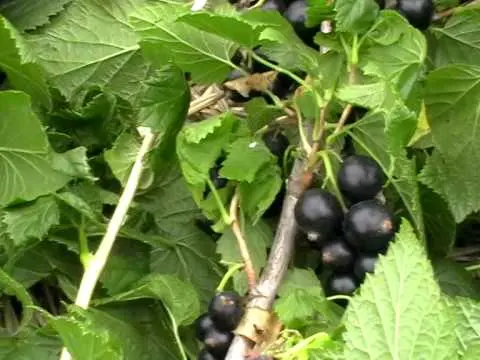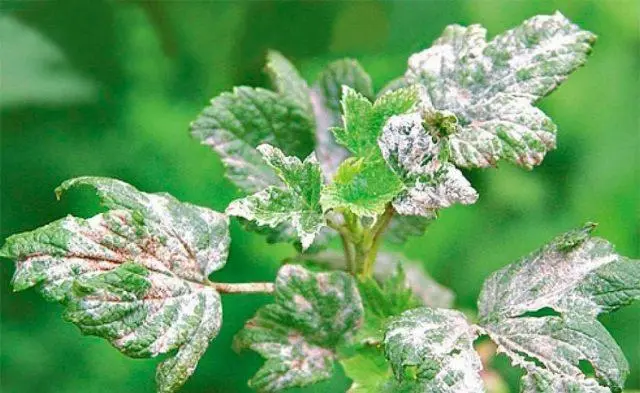Contents
Black currant is one of the plant products most beneficial to the human body. By the amount of vitamin C, the berry is ahead of citrus fruits and apples. Currant Black Boomer is deservedly considered one of the best varieties in terms of taste. And, importantly in horticulture, the culture is unpretentious to growing conditions.
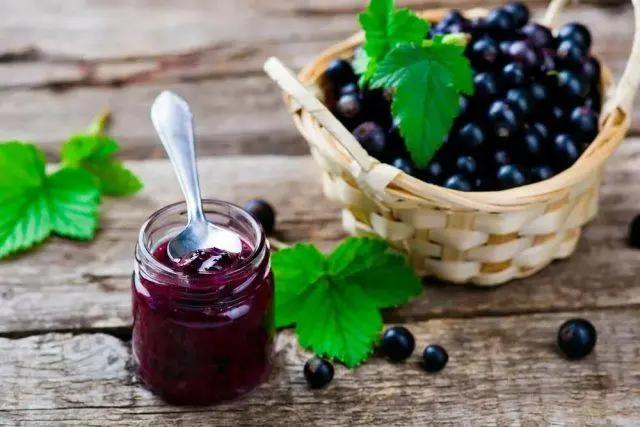
The breeding variety Black Boomer is characterized by early crop formation and a long shelf life of the berry on the bushes.
History of breeding
The black boomer was bred by the famous Ukrainian botanist Mikhail Uzenkov by crossing the Selechenskaya and Chudesnitsa varieties. It took the scientist 30 years to select a promising species. The fruit crop, whose name in translation from English sounds like “causing excitement”, has high commercial characteristics.
Despite the fact that the Black Boomer variety has undoubted merits and is popular with owners of personal plots and farm plantations, it has not passed the variety testing process. Due to the lack of practical research and recorded results, the Black Boomer type of currant is not included in the State Register.
Description of the currant variety Black Boomer
Berry culture is attractive to gardeners in that during the fruiting period, the berries do not fall from the bushes for several weeks. Large, ripe clusters are convenient to remove at harvest.
Bush
Currant bushes Black Boomer consist of straight, strong branches, compactly arranged relative to each other. The leaves are deep green in color and have a three-lobed shape.
Berries
Black boomer is characterized by large berries with a smooth, dense skin. The weight of each is 6-7 g. The pulp of the fruit is juicy, the taste is sweet with a pleasant aroma. Clusters of 20-25 berries are shaped like grape brushes. The variety belongs to the category of transportable, the berries do not deform when moved and retain their integrity.
Characteristic of the variety
Currant Black boomer refers to mid-season varieties. Garden culture is characterized by a high degree of resistance to adverse weather conditions.
Palatability
The fruits of blackcurrant have long been considered a storehouse of health. They contain many useful substances for the human body, including:
- vitamins C, P, B, K, A;
- trace elements potassium, iron, phosphorus;
- pectins;
- tannins;
- essential oils.
When fresh, the Black Boomer currant variety serves as a high-quality raw material for making fruit drinks, juice, and baking fillings. Useful qualities of berries are perfectly preserved during heat treatment, freezing and canning. Jam, jam, compotes, fruit marshmallows from fragrant garden berries are among the high-vitamin preparations.
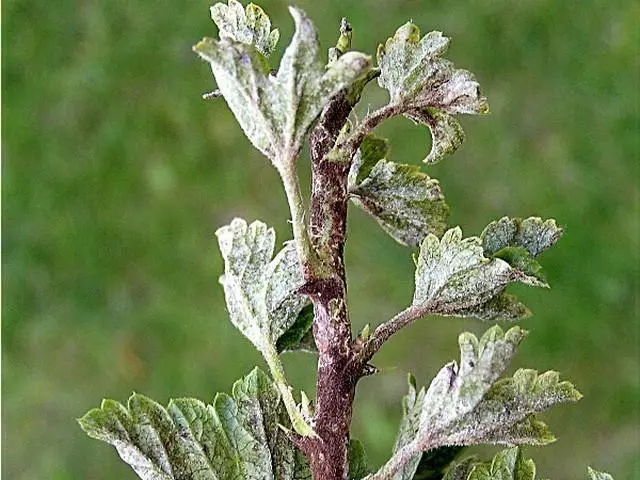
Thanks to the anthocyanins contained in berries, currants are included in the list of products that slow down the aging process.
Terms of maturation
In the temperate climate zone, the berries ripen in early July. Harvesting takes place over three weeks. Experienced gardeners advise picking fruits in dry weather, since when harvested in the rain, their shelf life is noticeably reduced.
Currant yield Black Boomer
Garden culture is characterized by a high level of productivity: gardeners take 5-7 kg of berries from a bush. But with painstaking care, you can collect up to 10 kg of selected currants. Gardeners like the variety because the fruits do not fall off after ripening, but hang on the branches for a long time.
Frost resistance
Currant Black boomer is classified as a winter-hardy variety. It can be cultivated almost throughout Our Country, except for the northernmost regions. In regions with characteristic cold winters, in order to prevent frostbite of the plant, it is recommended to cover the bushes with matting or a protective film.
Resistance to diseases
The variety Black Boomer is characterized by a high level of resistance to infectious diseases and pests. However, in the process of caring for shrubs, it is necessary to monitor their condition. Berry culture can be affected:
- fungus;

The appearance of the fungus is indicated by yellow spots on the leaves and growths on the branches.
- white rot, the growths of which resemble dirty cotton wool;

White rot leads to the death of parts of the shrub
- powdery mildew;

Powdery mildew appears as a whitish coating
Not only infections pose a threat to the health of the plant, but also some types of insects. Among the pests dangerous to the variety are:
- bugs of weevil and currant borer;
- glass and sawfly caterpillars.
Both traditional preparations (Bordeaux liquid, Alirin B solution) and novelties of the chemical industry are effective in eliminating dangerous factors. Among the measures aimed at destroying the infection are pruning branches, removing and burning damaged foliage.
Advantages and disadvantages
The hybrid form Black Boomer is characterized by increased productivity and high palatability. Gardeners involved in the cultivation of berries are attracted by the possibility of obtaining an early harvest.
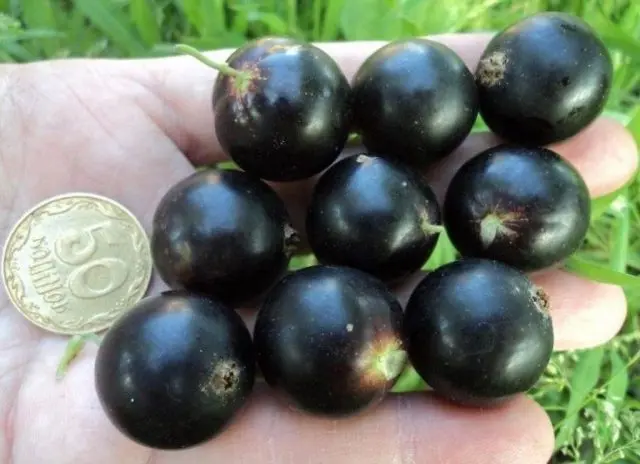
Variety Black boomer is distinguished by large fruit sizes, compactly collected in a brush
Pros:
- friendly fruiting – the berries ripen almost at the same time, and even when overripe, they hang in clusters on branches for a long time;
- large fruits;
- resistance to infections and pests;
- the ability to bear fruit several times a season.
Cons:
- a bountiful harvest leads to the landing of branches;
- there is a threat of loss of taste in extreme heat;
- shedding of berries is possible in a dry, hot summer.
How to plant
About a month and a half before planting currants, organic fertilizer should be applied to the soil. Manure, peat or compost can be used as top dressing. Later, a deep digging of the earth is carried out.
Before planting seedlings, it is necessary to inspect the area intended for growing currants. The soil must be cleared of weeds, wheatgrass is removed first.
Young plants are placed at a distance of 1,5-2 m. Compliance with the recommended intervals between seedlings is a necessary condition for the full nutrition of the berry crop. Among other things, if adult bushes do not close, they are easier to care for.
Landing pits are prepared in advance. Their optimal depth should be 35-40 cm, width 50-60 cm.
Care instructions
A few days after planting the seedlings, pruning is organized. In subsequent years, in early spring, the removal of damaged branches, double leaves and inflorescences is carried out.
Watering currant plantings Black Boomer is recommended as needed: if there is a lot of precipitation in spring, then additional moisture is not required. But under dry weather conditions, regular irrigation is necessary. The culture needs abundant watering: about 1,5 buckets per bush.
After harvesting, the land under plantings is loosened and fertilized with mixtures containing potassium. In autumn, pruning is done, eliminating damaged shoots and weak shoots. To save the roots from exposure to cold, mulching is carried out.
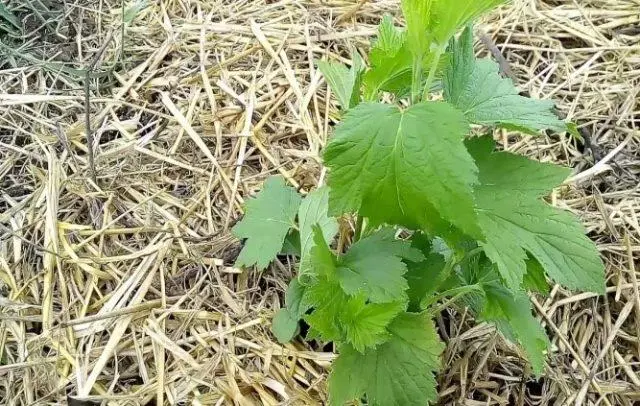
Mulching with sawdust, straw, peat or compost protects the plant from drying out in the heat and from freezing in the cold.
Ideally, a mature bush should have 15 healthy branches with viable buds. Shoots that are 6-8 years old are subject to annual pruning. It is always required to leave a few fresh shoots.
Conclusion
Currant Black Boomer gives a bountiful harvest, provided that all agrotechnical measures are observed in the process of caring for the crop. Compliance with the basic rules of cultivation guarantees the production of berries with excellent taste.











